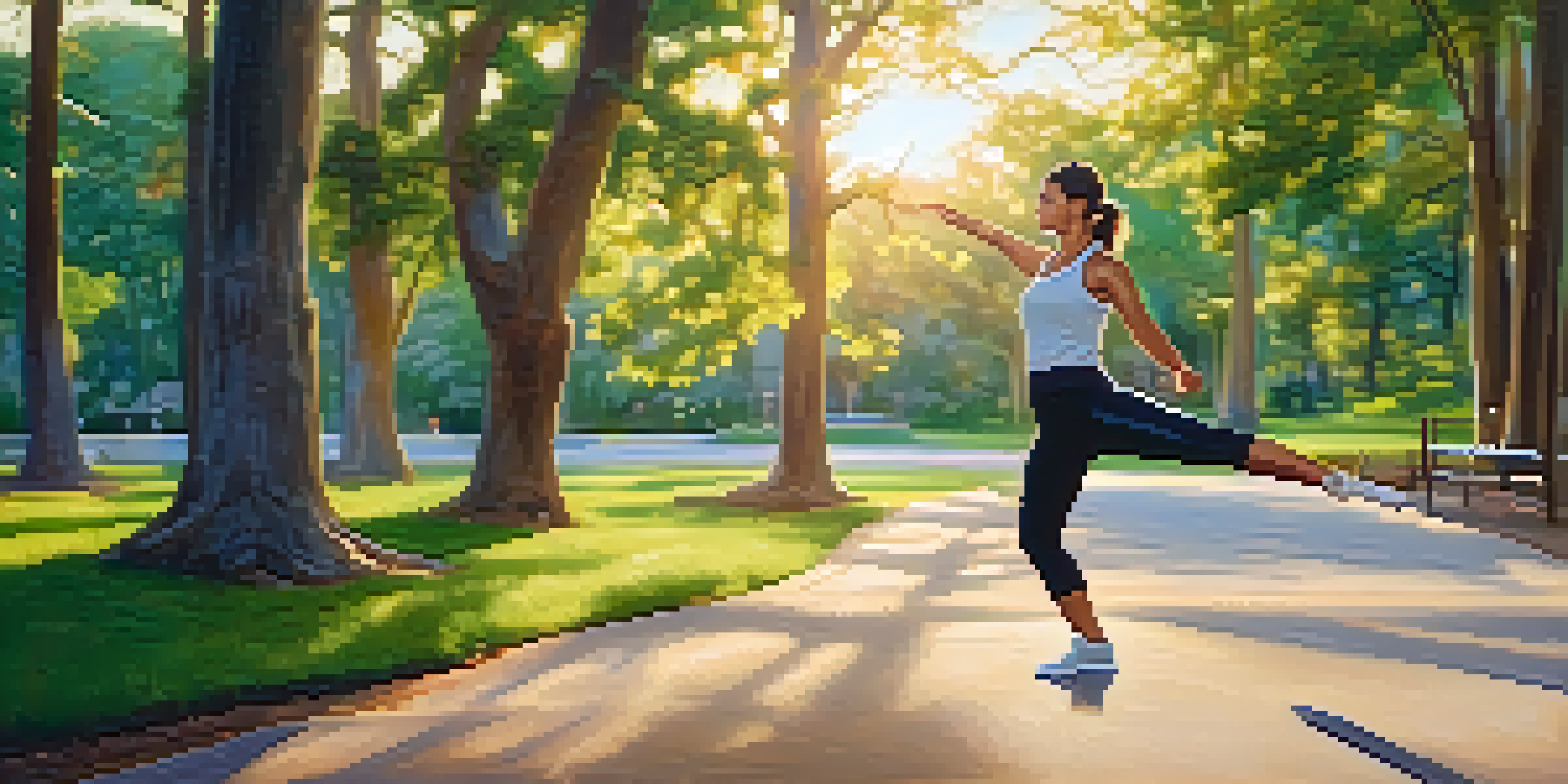Practical Techniques to Defend Against Common Street Attacks

Understanding the Importance of Awareness and Prevention
Situational awareness is your first line of defense against street attacks. By paying attention to your surroundings and recognizing potential threats, you can often avoid dangerous situations altogether. This means being mindful of who is around you and what they are doing, especially in crowded areas or unfamiliar environments.
The best defense is a good offense.
Prevention is key; simple habits like walking in well-lit areas or keeping your phone tucked away can significantly reduce your vulnerability. For instance, if you’re distracted by your phone while walking, you're less likely to notice someone approaching you. Make it a habit to keep your head up and scan your environment before moving.
Additionally, trust your instincts. If something feels off, it probably is. By being proactive and aware, you’re not just defending yourself; you’re also empowering yourself to take control of your safety.
Basic Self-Defense Techniques Everyone Should Know
Self-defense is not just about strength; it's about technique and strategy. Basic moves like the palm strike or knee to the groin can be surprisingly effective against an attacker. These techniques are designed to target vulnerable areas of the body, allowing you to create an escape route without needing extensive training.

It's important to practice these moves regularly, even if it's just at home in front of a mirror. Repetition helps build muscle memory, so when the moment arises, your body reacts without hesitation. Think of it like learning to ride a bike; the more you practice, the more instinctive it becomes.
Awareness is Your Best Defense
Situational awareness can help you avoid dangerous situations by recognizing potential threats around you.
Moreover, consider enrolling in a self-defense class. Not only will you learn valuable techniques, but you’ll also gain confidence in your abilities, which is a powerful deterrent to potential attackers.
Using Your Environment to Your Advantage
Your surroundings can be a valuable ally in a dangerous situation. For instance, if you find yourself being confronted, look for objects around you that can be used as improvised weapons, like a stick or a rock. Even items like your keys can be used to create distance between you and an attacker.
In any situation, the key is to remain calm and collected.
Additionally, don’t underestimate the power of noise. Shouting or making loud noises can draw attention and potentially scare off an attacker, as they often prefer to remain unnoticed. Think of it as making a scene; the louder you are, the less likely they’ll want to stick around.
Remember, your environment can also provide escape routes. Always be aware of exits, alleys, or safe spaces nearby. The more familiar you are with your surroundings, the better prepared you’ll be to react in a crisis.
The Power of De-Escalation Techniques
Sometimes, the best defense is avoiding physical confrontation altogether. De-escalation techniques focus on calming the situation rather than escalating it. Using a calm voice, maintaining open body language, and showing that you’re not a threat can often defuse tension.
For example, if someone approaches you aggressively, try to engage them in conversation rather than becoming defensive. Ask them questions or acknowledge their feelings. This tactic can shift their focus and may even lead them to back down, as they see you are not a threat.
Self-Defense Techniques Matter
Basic self-defense moves, like palm strikes and knee strikes, can empower you to create an escape route when faced with an attacker.
Practicing empathy and understanding can go a long way. Remember, many attackers are seeking a reaction; by remaining calm and collected, you can often turn the tide in your favor.
Maintaining Physical Fitness for Self-Defense
Physical fitness plays a crucial role in self-defense. Being in good shape not only boosts your confidence but also enhances your ability to respond quickly in a dangerous situation. Activities like running, martial arts, or even regular gym workouts can increase your strength and agility.
Imagine being chased or needing to fight back; having the stamina to run or the strength to push someone away can make all the difference. Regular exercise also helps reduce stress and anxiety, allowing you to maintain a clear mind in stressful situations.
Consider incorporating self-defense-specific workouts into your routine. They can improve your reaction times and teach you to use your body effectively, making you better prepared for any potential threat.
Utilizing Technology for Personal Safety
In today's digital age, technology can be a powerful ally in your personal safety arsenal. Apps that share your location with trusted friends or alert authorities in emergencies can provide an extra layer of security. For instance, apps like bSafe or Life360 can notify someone if you feel threatened.
Moreover, carry a personal alarm or pepper spray as an added precaution. These items can be easily slipped into a bag and used as a deterrent in case of an attack. Just knowing you have a tool at your disposal can boost your confidence.
Practice Makes Prepared
Rehearsing different scenarios can build your confidence and help you respond effectively to real-life threats.
Lastly, familiarize yourself with local emergency numbers and resources. Having this information readily available can save precious time in a crisis, ensuring you get help when you need it most.
The Importance of Practicing Scenarios
Preparation is key in any self-defense strategy. Practicing different scenarios with friends or family can help you become familiar with various ways to respond to potential threats. Role-playing can make these situations feel less intimidating and more manageable.
For example, simulate a situation where someone approaches you aggressively and practice your responses. This rehearsal helps reduce panic and increases your confidence when faced with real-life situations. Think of it as a dress rehearsal for a performance; the more you practice, the better your performance will be.

Additionally, reflect on past experiences or news stories. Analyze what went right or what could have been done differently. Learning from these situations can help you refine your own strategies and become even more prepared.